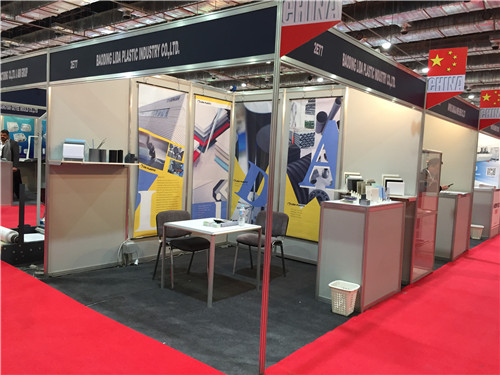Nov . 17, 2024 07:11 Back to list
pvc pipe coupling
Understanding PVC Pipe Couplings An Essential Component in Plumbing
When it comes to plumbing systems, one of the essential components that facilitate a seamless connection between pipes is the PVC pipe coupling. PVC, or polyvinyl chloride, is a popular plastic material widely used in various applications, including plumbing, construction, and electrical installations. The versatility and durability of PVC make it a preferred choice for residential and commercial plumbing systems. In this article, we will explore the significance of PVC pipe couplings, their types, applications, and installation process.
What is a PVC Pipe Coupling?
A PVC pipe coupling is a fitting that connects two pieces of PVC pipe together. It serves as a link and allows for the extension of piping systems, enabling the transport of liquids or gases. Couplings come in various sizes and configurations, making them suitable for different plumbing projects. The primary function of a coupling is to provide a tight seal between the pipes, ensuring no leaks or pressure losses occur in the system.
Types of PVC Couplings
There are several types of PVC pipe couplings available on the market, each designed for specific applications
1. Regular Couplings These are the most common type of PVC couplings, used to connect two pipes of the same diameter in a straight line.
2. Reducing Couplings Reducing couplings allow for the connection of two pipes of different diameters, making them useful in applications where the plumbing system transitions from a larger pipe to a smaller one.
3. Screw-On Couplings These couplings are designed with threads that allow for easy connection and disconnection of pipes. They are often used in situations where frequent adjustments or maintenance may be required.
4. Flexible Couplings These are used to connect pipes that may experience movement or vibration. They provide a flexible connection, accommodating slight misalignments between the pipes.
5. End Caps and Tees While not strictly couplings, these fittings are important in PVC plumbing systems. End caps can close off the end of a pipe, while tees allow for branching into new directions.
Applications of PVC Pipe Couplings
pvc pipe coupling

PVC pipe couplings are widely used in various applications due to their corrosion resistance and lightweight nature
. Some common applications include- Residential plumbing This includes water supply lines, drainage systems, and irrigation systems. - Commercial plumbing PVC couplings are used in large-scale plumbing installations, including office buildings, malls, and factories. - Pool and spa installations PVC is commonly used in pool plumbing systems for its durability and ability to withstand harsh chemicals. - Electrical conduit PVC couplings are also utilized in electrical applications to connect conduit sections.
Installation of PVC Pipe Couplings
Installing PVC pipe couplings is a straightforward process, making it accessible for both professional plumbers and DIY enthusiasts. Here are some general steps to follow
1. Preparation Gather all necessary tools and materials, including PVC pipes, couplings, PVC cement, and a pipe cutter.
2. Cut the Pipes Measure and cut the PVC pipes to the desired length using a pipe cutter. Ensure that the cuts are straight for a better fit.
3. Clean the Ends Use a cloth to clean the ends of the pipes to remove any dirt or debris. This will ensure a strong bond when the cement is applied.
4. Apply PVC Cement Apply PVC cement to both the inside of the coupling and the ends of the pipes. Be generous but avoid excess.
5. Join the Pipes Insert the pipes into the coupling, giving it a slight twist to ensure even distribution of the cement. Hold in place for a few seconds to allow the bond to set.
6. Curing Time Let the cement cure for the recommended time before subjecting the pipes to pressure or water flow.
Conclusion
In conclusion, PVC pipe couplings play a crucial role in ensuring efficient plumbing systems, allowing for flexibility and versatility in design and installation. Understanding the different types and applications of PVC couplings can help homeowners and professionals make informed decisions for their plumbing projects. With proper installation techniques, PVC pipe couplings can provide long-lasting solutions that withstand the test of time.
-
High-Quality PPR Pipes and Fittings Durable ERA PPR & PVC PPR Solutions
NewsJul.08,2025
-
Black HDPE Cutting Board - Durable, Non-Porous & Food Safe HDPE Plastic Cutting Board
NewsJul.08,2025
-
High-Quality CPVC Panel Durable HDPE & PVC Panels Supplier
NewsJul.08,2025
-
Double PE Welding Rod Supplier - High Strength, Durable & Versatile Welding Solutions
NewsJul.07,2025
-
High-Quality PVC-O Pipe Supplier Durable 75mm PVC Pipe & Connections Leading PVC Pipe Company
NewsJul.07,2025
-
HDPE Drainage Pipe Supplier – Durable & Corrosion-Resistant Solutions
NewsJul.06,2025

